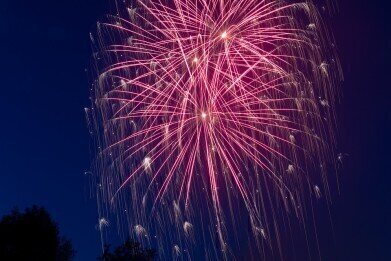Air clean up
How Bad Were New Year’s Fireworks for Pollution?
Jan 06 2017
New Year’s Eve is a time for celebration all around the globe and the traditional fireworks display is intended to be the climax of the night. However, air quality readings from several cities in Germany are now suggesting that the much-loved practice might be contributing to dangerously high levels of air pollution.
In Munich, Germany’s third biggest city, levels of particulate matter 2.5 (PM2.5) reached a staggering 26 times the maximum limit of 50mg/m3 as recommended by the EU.
Alarming pollution levels
Normally, pollutants such as PM2.5, nitrogen oxides (NOx) and carbon dioxide (CO2) are emitted by the exhaust fumes of vehicles. Indeed, it was thought that the reduced CO2 emissions from diesel engines made them a more desirable car until recently, when figures collated by mobile monitoring stations which assessed diesel emissions showed that levels of PM2.5 in diesel engines were significantly higher than in petrol ones.
However, on this one single night in Germany, national readings showed that a grand total of 4,000 tonnes of particulates had been released into the air. That accounts for a whopping 15% of the annual vehicular emissions across the country.
PM2.5 is an especially worrisome pollutant, since it is small enough to be inhaled and is even capable of infiltrating the bloodstream. Once inside the human body, it can wreak all kinds of havoc with our organs, causing respiratory and cardiovascular complications and even leading to death.
Environmentalists up in arms
In the wake of the startling pollution figures, environmentalists across Germany have been petitioning for the restriction of fireworks sales in the country. Fireworks are thought to be so harmful to air quality due to the unique cocktail of chemicals they contain.
For example, the colouration of the fireworks is achieved through the use of metallic particles, such as copper, barium, lithium and strontium. Moreover, there are even more metals used to aid their propulsion, including potassium and aluminium, while particles such as lead and titanium are instrumental in creating the crackling noises associated with fireworks displays.
This results in a high concentration of soot in the air, as well as increased levels of contaminants like magnesium, sulphur dioxide (SO2) and nitrogen dioxide (NO2).
Following suit?
Other countries around the globe have already outlawed the sale of fireworks to members of the public. The majority of Australian states (with the exception of the Northern Territory and Tasmania) prohibited public sale of fireworks in the 1980s in response to growing concerns over safety.
Certain states in the USA, including Massachusetts, New Jersey and Delaware, have banned the public use of fireworks outright. Chile also has a ban on consumer fireworks.
The latest nation to ban the pyrotechnics is India, where the law only came into effect at the beginning of December 2016. The decision came as a direct result of the immense pollution which descended upon its capital New Delhi in the wake of the Hindu festival Diwali.
Events
May 11 2025 Vienna, Austria
May 18 2025 Algiers, Algeria
23rd International Water Management Exhibition
May 20 2025 Prague, Czech Republic
Singapore International Water Week Spotlight 2025
Jun 23 2025 Singapore
Jun 25 2025 Sao Paulo, Brasil














